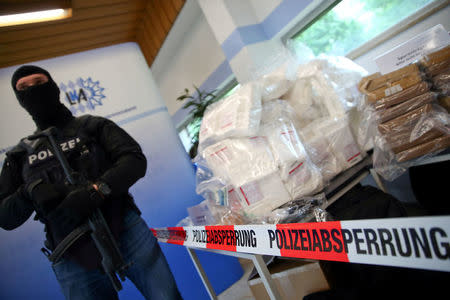Cocaine making a comeback in Europe

LISBON (Reuters) - Rising amounts of cocaine are reaching Europe from Latin America and smugglers have found new entry points through container ports like Antwerp, according to the latest yearly report by the Lisbon-based EU drugs agency.
Evidence of the rising supply of cocaine to Europe was found in higher seizures by police, a jump in the number of first-time users who need treatment and the availability of the purest, and more dangerous, cocaine in a decade.
Cocaine use in Europe had been declining in recent years, having peaked around 2008. At the time, the relatively high cost of the drug dampened its use during the financial crisis.
"The findings from our new report indicate that Europe is now experiencing the consequences of increased cocaine production in Latin America," said Alexis Goosdeel, director of the EMCDDA drugs agency.
"Until we will see the results of problematic use it may take some time but the substances are here and the availability and purity is so high that it will certainly have an impact," Goosdeel said.
The number of first-time users needing treatment jumped 20 percent to 30,300 in 2016 from 2014.
The report found that an estimated 3.5 million people used cocaine last year. But early signs that growing supply was translating into more consumption was found in tests of wastewater in major cities.
Out of 31 cities - including London, Barcelona and Amsterdam - where wastewater was tested for cocaine residues, 19 cities reported higher residues.
Cocaine is primarily produced in Peru, Colombia and Bolivia and in the past it has mainly been smuggled into Europe through Spain and Portugal.
But, measured by police seizures, Belgium jumped into the top spot in 2016, accounting for 43 percent of the total 30 tonnes seized, the report said. That indicates smugglers are shipping the drug through major container ports further north, bringing cocaine closer to big consumer markets like Britain.
(Reporting by Axel Bugge in Lisbon and Julia Echikson in Brussels; Editing by Toby Chopra)

